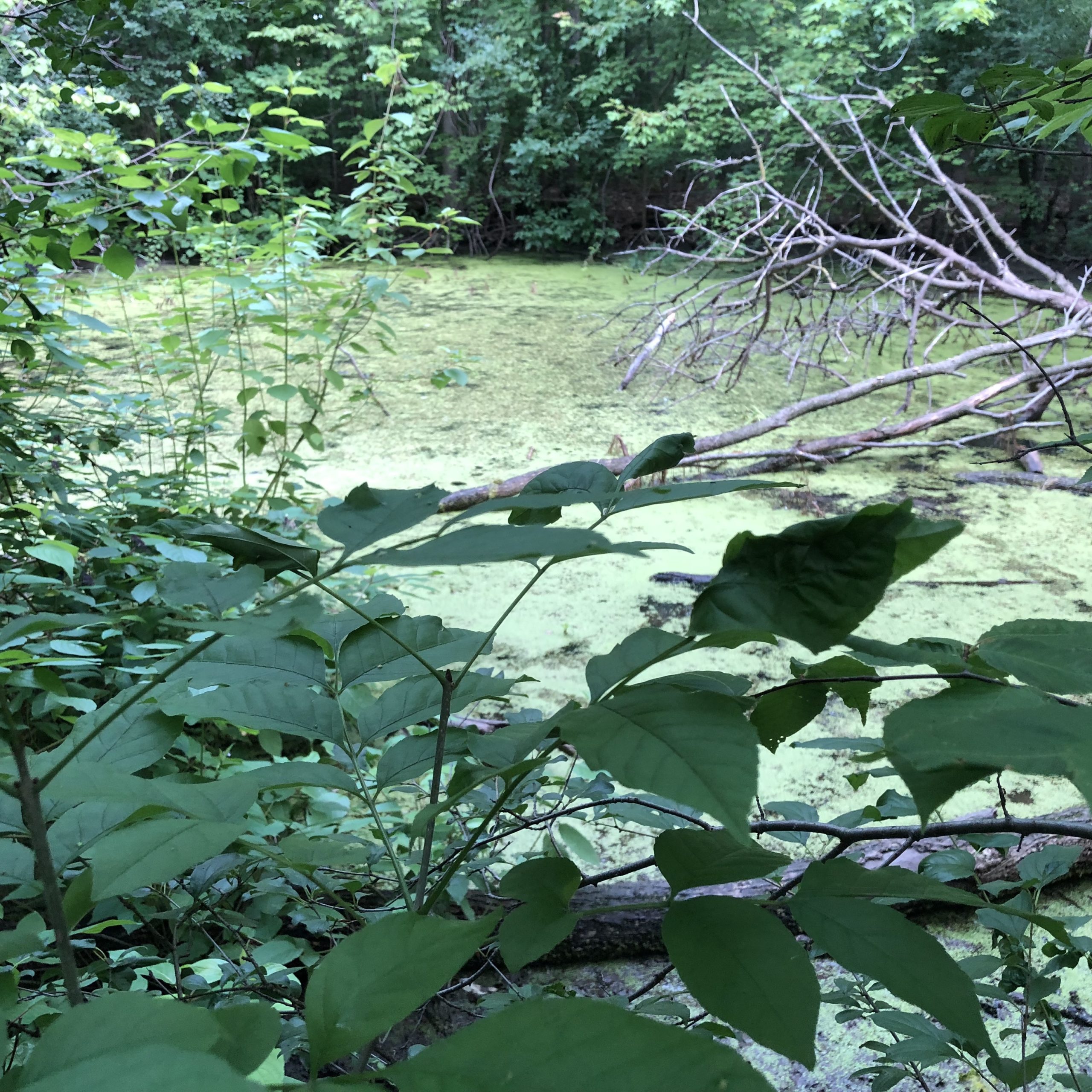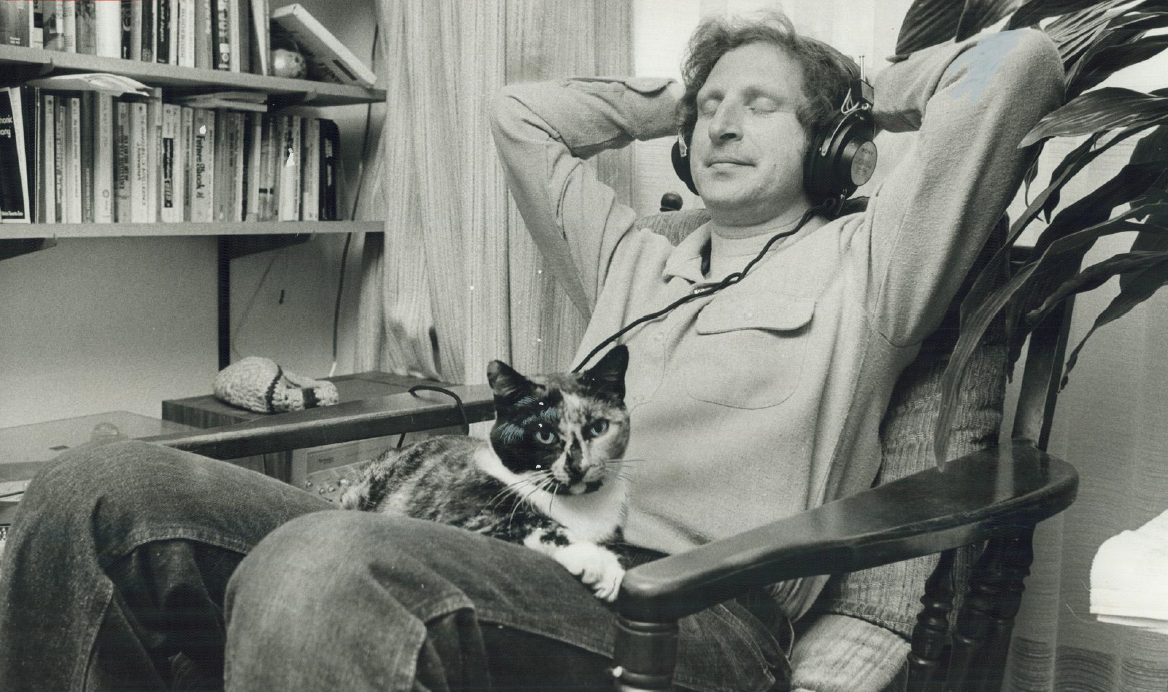A University Campus, like any other place, contains the presence of people’s imprints, the way they have modified the land and the way they carry memories with them about it. Of course, the big stories are there, who planned the campus officially, the administrators and the architects, those who get their names recorded in planning documents and official histories. But the same does not apply to many others, for example, Indigenous people, for whom land is especially important to respect and remember, and many others who have developed a sense of place and place attachment on campus. Far too often, there is a general amnesia about their histories. At York University’s Keele Campus I often wonder about the untapped knowledge held by staff and faculty members who spend their working lives on the campus and who then retire without leaving a trace of their engagements and memories of the University lands.

Licht in 2022
Larry Licht is one such person. He taught in the Department of Biology from the early 1970s to the early 2010s and now lives in retirement in Victoria, British Columbia. During his time at York he followed the fate of the wood frogs in the Michael Boyer Woodlot, next door to the Lumbers Building where he had his office on the second floor. I had heard about his work in the woodlot and was curious to know more so I tracked him down and gave him a call. He was surprised to hear from me but was happy to talk.
Licht tells me he regularly monitored the eggs laid by the frogs in the two ponds in the woodlot, the hatching of the little tadpoles, and then their growth into mature frogs. He also obsessed with the fate of the frogs in light of the massive developments that took place around the campus and that affected the hydrological patterns in the woodlot. He feared that if the water level in the ponds became too low, the frogs were in danger of disappearing, just like a population of toads had before them. At one point, he worked with Physical Plant on the campus to build a berm in the northern parts of the woodlot to prevent water seepage from the ponds. This berm is still present in the woodlot and I now think about Licht when I stand on or walk over it, thinking that perhaps it should be named the Licht Berm. I also wonder, as does Licht, if it had any effect.

South Pond that holds the major population of wood frogs, late July 2023.
Licht also arranged to have the ponds filled up with water in the spring to prevent their drying out before the life cycle of the frogs had been completed in the fall. He mentions this a little apologetically, it is interfering with nature he says, but quickly adds that it compensated for another unnatural act, the massive development of the campus. Licht monitored the wood frogs for a period of approximately twenty years. During that time, he found surprisingly little change. Yes, the populations varied from year to year but there was no absolute decline. The variation could be quite drastic, from 15 to 170 egg mass counts from year to year but remaining stable over the years. The variation could be due to many reasons, such as the climate (affecting the water level) and predators. It shows the resiliency of the population and perhaps the species as a whole. It is a unique data set that shows the record of an isolated population of wood frogs over the long-term. Licht still has the data of his observations though he never had the time to publish them.
I ask about the dangers of in-breeding in the frog population given their growing spatial isolation in a sea of development, but Licht tells me that it is only likely to have an effect over the long-term, that is, multiple human generations. I read in one of Licht’s publications that raccoons and foxes prey on the frogs and it may be a special problems on the York Campus. But when I ask about it he tells me that they are only secondary and relatively minor predators, the Blue Herons and Night Herons are worse culprits. When they sweep into the woodlot, they can eat up to 90 percent of the tadpoles in the ponds. Licht observed this himself on some of the occasions he sat quietly in the woodlot and monitored the ponds. He recalls these moments fondly though also with some discomfort during the advent of the West Nile Virus outbreak when there were likely many mosquitoes that carried the virus in the woodlot.
I ask Licht if the wood frogs are still around and he believes they are though this time of the year (August) is a bad time to spot them. This is the time they hide in the forest under logs and stones to remain cool and moist. The best time to spot them is in the last week of March and beginning of April when they lay their eggs and mate in the ponds. This is also a time when you can hear their rolling, duck-like “quacking” calls.
Licht performed standard academic work on frogs over the years, and published articles with titles like “Habitat Selection of Rana pipiens and Rana sylvatica during Exposure to Warm and Cold Temperatures.” One of his major research achievements was to disprove the widely circulated claim in the 1990s scientific community and popular media that ultraviolet radiation was killing amphibians. Licht convincingly argued against this hypothesis, showing that increased ultraviolet radiation typically don’t reach amphibians and their habitats. This is evident in the Boyer Woodlot, where the tree canopy shields the ponds from the sun’s rays. At a website, still active, called “Amphibians and Ultraviolet Radiation,” he provides a systematic account of his research, replete with evidence, as well as an astute account of how the hypothesis emerged in the first place. It was likely, he writes, fueled by the warnings of a thinning ozone layer and the consequent increase in ultraviolet B radiation, and championed by pseudo-scientists and media hype. Indeed, even some natural scientists were seduced by the hypothesis, and Licht shows effectively how such “dogmas” can be adopted and then entrenched and protected by the academic community, using the peer review of one of his own papers as an example. But he is proud that the real science won out in this instance and references an article in BioScience as one of his key contributions to the debate.
But Licht wasn’t only involved in standard research. He also took part in promoting educational endeavours. In 1978, he produced a record in collaboration with the Toronto Zoo called “Sounds and Song By Animals At The Metro Toronto Zoo.” The cover of the record, designed by his wife Gillian, features the head of a gorilla.  This occasioned the Toronto Star to do a feature article on him where he was photographed in a chair with headphones, "tuned in to the dulcet tones of a toad", and the family cat in his lap. He recounts an interesting story about that photo. When his son, at the time maybe twelve years old, came to school one of his friends came up to him and announced excitedly that he had seen his cat in the newspaper that morning! The story shows that for some people, a young boy in this instance, animals are more important than people, a sobering thought in a human-centred world facing a severe environmental and biodiversity crisis.
This occasioned the Toronto Star to do a feature article on him where he was photographed in a chair with headphones, "tuned in to the dulcet tones of a toad", and the family cat in his lap. He recounts an interesting story about that photo. When his son, at the time maybe twelve years old, came to school one of his friends came up to him and announced excitedly that he had seen his cat in the newspaper that morning! The story shows that for some people, a young boy in this instance, animals are more important than people, a sobering thought in a human-centred world facing a severe environmental and biodiversity crisis.

Mixta, the female cat at her house on West Lynn Avenue in Toronto poses for the Toronto Star with one of her pet human companions in 1979. Toronto Star Photograph Archive, Courtesy of Toronto Public Library.
In turns out Licht has come to tackle the global environmental crisis in his retirement years, but not as a biologist. Last year he self-published a short book, Trial and Error (2022), that features a series of poems and photos. At the time of its publication, he wrote: “As a biologist and ecologist, I have spent over 50 years studying aspects of animal evolution and behaviour. Despite the good intentions of the scientific method and its goal of understanding, for me, there came a time when life on earth was seen as beyond comprehension. Our mere existence, along with all living forms and formations, became a wonder that must be felt and appreciated, not just intellectually, but deeply within our souls and psyches.”

Sample pages from Trial and Error. The poem reads: "Colourful frogs in complex chorus, echoing an ancient hymn to vernal cycles."
His book of poems reflects this trajectory. In one poem, he criticizes the scientific efforts:
…
to demystify and dismember our surroundings into
cold kinetic rates and averages of
barren statistics,
arranged to resemble reality, yet
conveying little more than shelf space,
rows of pickled carcasses
carrying caliper-measured crania.
This contrasts with his message to appreciate the more than human for what it is without intricate scientific analyses:
Simplicity of understanding,
the magic of connections,
beyond human concerns,
flora and fauna as monuments to
Spiritual delight and celebration.
Larry Licht’s life story teaches important lessons. He was a natural scientist for most of his professional life, employing standard scientific methods in his research, and he imparted that knowledge to thousands of students. He was also somebody who paid attention to his immediate environment and engaged in intricate research and care for some of the neighbours outside his office, the wood frogs of a campus woodlot. He often went there in contemplation and communion with the more than human. He then retired but he is still active as a poet of reflection and deep thought, seeing both the merits and shortfalls of the scientific method. These are reflections that students largely miss. It gives me pause to think about other people in ‘retirement’, their life experience, and the valuable lessons they can teach us about the world.



